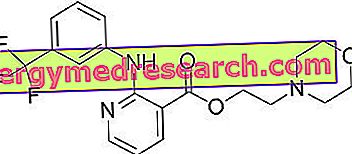Related articles: Diabetic ketoacidosis
Definition
Diabetic ketoacidosis is an acute metabolic complication of diabetes, characterized by hyperglycemia, hyperketonemia, and metabolic acidosis.
This condition develops when the body's cells cannot use glucose as an energy source, so they begin to burn fat to meet the body's fundamental metabolic demands. This causes the formation of ketones (acetoacetic acid, acetone and beta-hydroxybutyric acid).
The passage of these substances into the blood causes a drop in pH, which determines marked values of acidosis, a condition responsible for most of the symptoms and complications.
Diabetic ketoacidosis occurs mainly among patients with type 1 diabetes mellitus, especially due to the failure to administer exogenous insulin or in situations of particular physiological stress, when the usual therapeutic doses are not sufficient for metabolic needs.
In particular, diabetic ketoacidosis can be triggered by acute infections (in particular, UTIs and pneumonia), myocardial infarction, stroke, pancreatitis and trauma. Even taking certain drugs, including corticosteroids, thiazide and sympathomimetic diuretics, can predispose you to this complication.
Most common symptoms and signs *
- Acute abdomen
- Halitosis
- palpitations
- ketone
- ketonuria
- Ketosis
- Coma
- Conati
- Night Cramps
- Difficulty concentrating
- Dehydration
- Temporal and spatial disorientation
- Abdominal pain
- Chest pain
- Glycosuria
- Hyperglycemia
- hyperkalaemia
- Hypophosphatemia
- hypohidrosis
- Hypokalemia
- Hypotension
- Orthostatic hypotension
- Lethargy
- Headache
- Nausea
- Nervousness
- Polyuria
- Intense thirst
- Drowsiness
- Tachycardia
- tachypnoea
- He retched
Further indications
Usually, the symptoms of an episode of diabetic ketoacidosis evolve within 24 hours. At the onset this condition causes hyperglycaemia with urinary frequency (need to urinate frequently), intense thirst, fatigue, blurred vision, polyuria (large amounts of urine) and polydipsia (need to drink a lot).
Nausea, vomiting and widespread abdominal pain are typically added to these symptoms. Patients can be hypotheses and tachycardias due to dehydration and acidosis; moreover, they can have a frequent and deep panting to compensate for the acidosis (Kussmaul breath). The breath has a typical fruity smell, similar to that of rotten apples, for exhaled acetone.
Subjects in diabetic ketoacidosis can also present irritability, difficulty concentrating, mental confusion, lethargy and drowsiness.
In the absence of timely treatment, diabetic ketoacidosis progresses to cerebral edema, coma and death. The main causes of death are cardiovascular collapse, hypokalemia and infections.
Diabetic ketoacidosis is defined by the finding of hyperketonemia and metabolic acidosis with increased anion gap, in the presence of hyperglycemia. The diagnosis of the condition is carried out, therefore, mainly with the execution of blood and urine tests.
In the case of diabetic ketoacidosis, the most urgent therapeutic goals are the restoration of the intravascular volume (to increase blood pressure and ensure glomerular perfusion), the correction of hyperglycemia and acidosis (to suppress the production of ketone bodies) and the prevention of hypokalemia.



